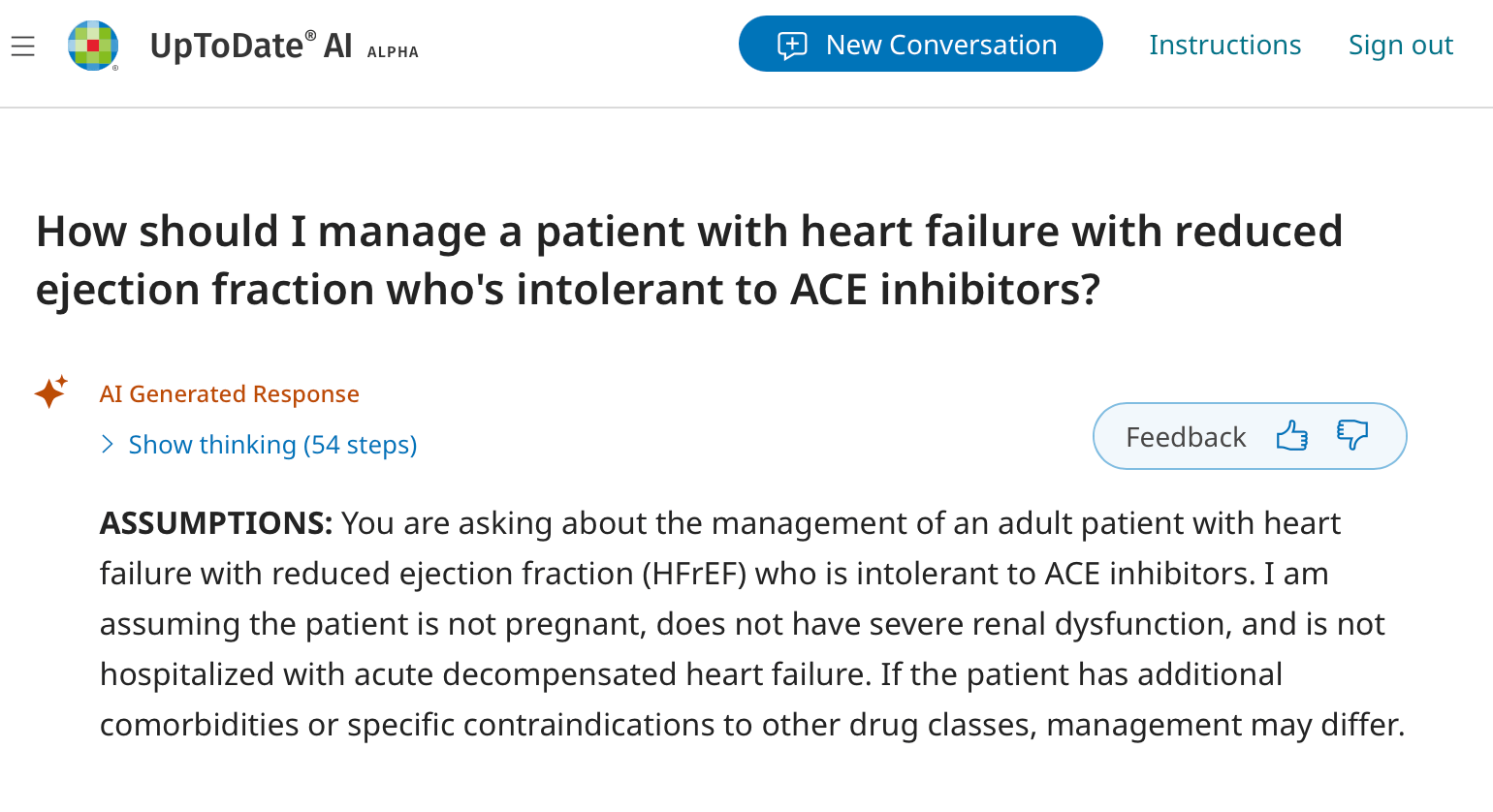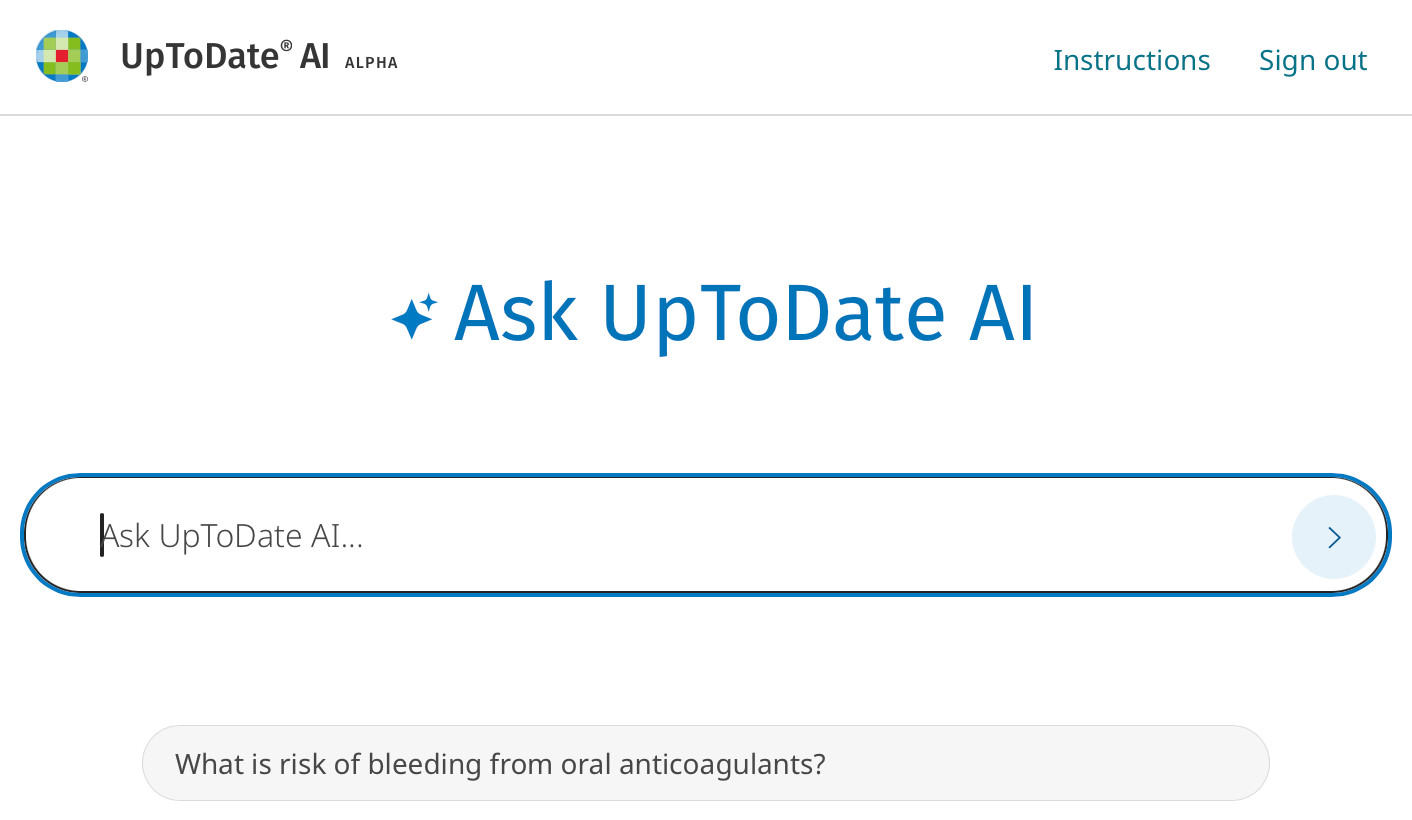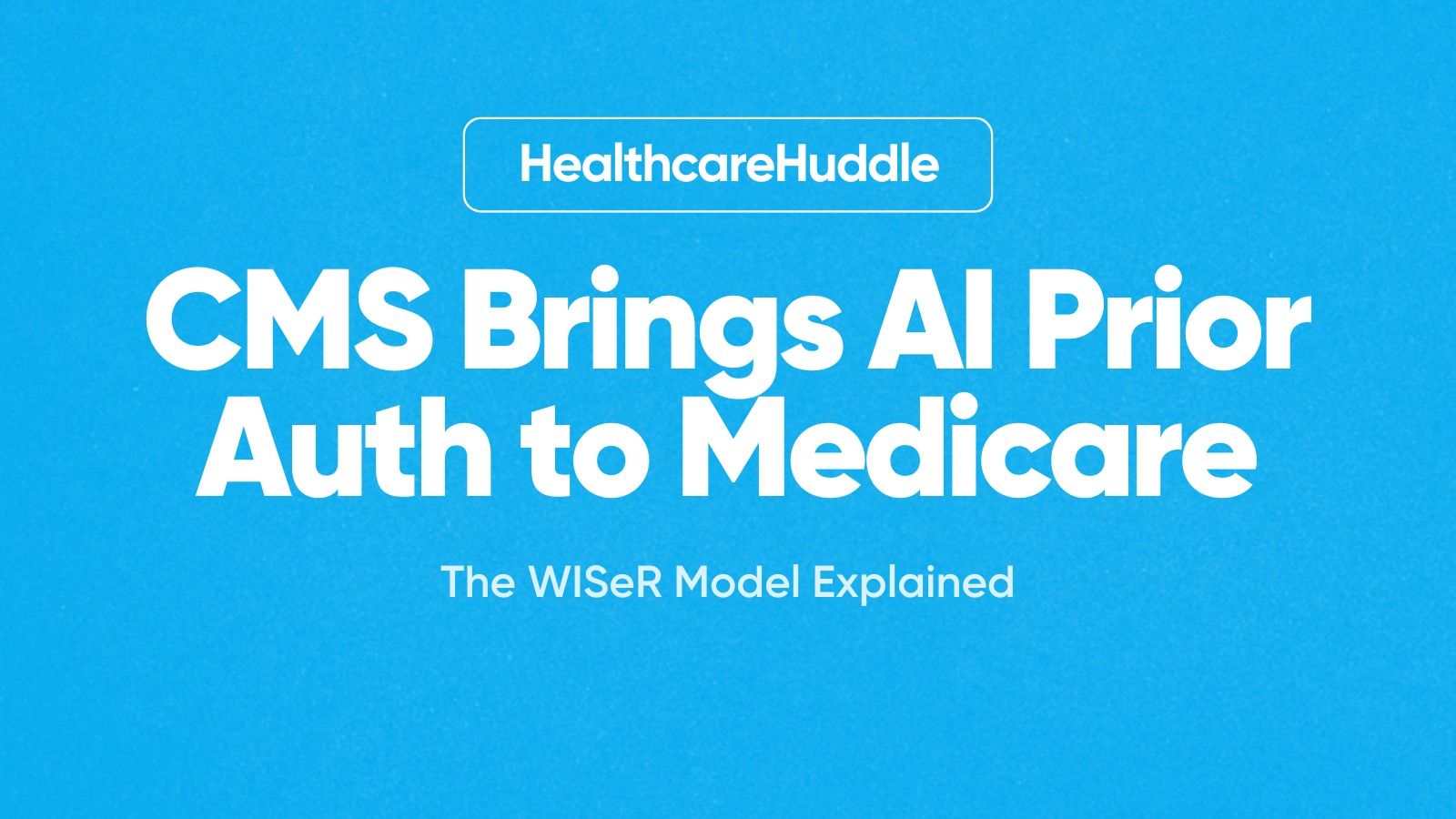SPONSORED DEEP DIVE
UpToDate Expert AI: Generative AI for Doctors, by Doctors
Every time I'm on rounds, I find myself reaching for UpToDate.
It's become second nature—patient presentation, quick search, evidence-based answer. But even with UpToDate's reliability, I still spend valuable minutes navigating through topics, cross-referencing sections, and piecing together the clinical reasoning I need.
What if that process could be faster? What if instead of searching through topics, I could simply ask a clinical question and get a nuanced, evidence-based answer that shows its work?
That's exactly what UpToDate is betting on with its new Expert AI solution.
In this article, I'll break down what UpToDate Expert AI actually is, explore how it fits into the evolving medical search and clinical decision support landscape, and share my take on whether this represents a meaningful step forward for clinical decision support.
The Deets: UpToDate Expert AI
What is UpToDate?
For those who somehow haven't encountered it during medical school or residency, UpToDate is the clinical decision support platform that has become synonymous with evidence-based medicine.
It's used by more than three million clinicians at thousands of hospitals worldwide, with content written and peer-reviewed by over 7,600 medical experts. The platform covers virtually every medical topic, from common presentations to rare diseases, with recommendations grounded in the latest research.
What sets UpToDate apart from other medical references is its approach to content curation. Every topic is authored by practicing specialists, continuously updated as new evidence emerges, and organized in a way that mirrors clinical thinking. When I look up "heart failure management," I'm not just getting a textbook overview—I'm getting actionable, evidence-based guidance that reflects current best practices.
What is Expert AI?
UpToDate Expert AI is essentially a conversational interface layered on top of UpToDate's existing content repository. Think of it as having a clinical colleague who has memorized all of UpToDate and can discuss any topic in real-time.
But here's where it gets interesting—and where UpToDate is trying to differentiate itself from other AI clinical tools.
Instead of using a generic language model trained on medical literature, Expert AI uses what UpToDate calls "Clinical Intelligence." This approach attempts to emulate how expert clinicians actually reason through problems, using a multi-layered validation framework overseen by board-certified physicians.
The system provides context-rich responses with single-click access to the assumptions driving each answer, the source content in UpToDate, and the step-by-step rationale used to generate the response. In theory, this means you can quickly review the AI's reasoning and decide whether to trust its recommendations.
UpToDate is also emphasizing transparency and enterprise-readiness—features that matter more to health system administrators than individual clinicians, but are crucial for widespread adoption.
The AI Clinical Reference Landscape
The AI-powered clinical reference space has become increasingly crowded, with everyone from established incumbents to well-funded startups vying for physicians' attention. As I explored previously, this market is evolving fast—and the competitive dynamics are getting interesting.
The landscape breaks down into two main camps:
Established Heavyweights
UpToDate (Wolters Kluwer) remains the longtime gold standard, with deeply vetted guidelines and drug content used at thousands of hospitals worldwide. They're now layering AI search and summarization on top of their trusted content.
ClinicalKey AI (Elsevier) combines Elsevier's premium medical content with generative AI, delivering trusted, citable answers often bundled in enterprise deals.
DynaMed / Dyna AI (EBSCO) offers an evidence-curated database with AI-enhanced natural language queries, with strong reputation among hospitals and EHR integrations.
High-Velocity Challengers
OpenEvidence provides rapid literature synthesis, and a recent $210M Series B with early integration partnerships including Elsevier, NEJM, and JAMA.
Doximity combines Pathway's structured medical dataset with Doximity's reach to 80%+ of U.S. doctors.
AMBOSS is expanding beyond medical education into clinical decision support with an AI "medical co-pilot," leveraging its strong editorial credibility.
Glass Health focuses on AI-assisted differential diagnoses and care plans, positioning itself as a planning assistant rather than a static reference.
Dashevsky’s Dissection
UpToDate Expert AI brings several unique elements to clinical decision support that address longstanding physician pain points.
Clinical Intelligence approach: Rather than using a generic language model, Expert AI emulates how expert clinicians actually reason through problems.
Transparency by design: Every response shows you the specific UpToDate topics used, the assumptions the AI made about your question, and the step-by-step rationale it followed. This addresses one of my biggest concerns with AI clinical tools—the black box problem, where you get an answer but no insight into how it was generated.
Built on trusted content: Expert AI draws exclusively from UpToDate's expert-authored, peer-reviewed content rather than web-scraped medical literature. This means responses are grounded in the same evidence-based guidance physicians already rely on, just made more accessible through conversational AI.
Enterprise-ready from day one: The platform is designed for health system deployment with appropriate governance, compliance features, and EHR integration capabilities—addressing the operational concerns that often prevent AI adoption at scale.
My Experience with Expert AI
I had the opportunity to test UpToDate Expert AI during its development phase, and the experience was notably different from other AI clinical tools I've used.
The interface feels familiar if you're already an UpToDate user—clean, medical-focused, no distractions. But the conversational approach changes how you interact with the content. Instead of navigating through topic hierarchies, you can ask direct questions like "How should I manage a patient with heart failure with reduced ejection fraction who's intolerant to ACE inhibitors?"
What impressed me most was the transparency. For each response, I could see the specific UpToDate topics used, the assumptions the AI made about my question, and the reasoning pathway it followed.

The quality of responses also felt more clinically nuanced than what I've experienced with general AI tools. When I asked about complex scenarios (”should anticoagulation be started in patients with heart failure and left ventricular non-compaction”), Expert AI appropriately acknowledged uncertainty and provided balanced discussions of different approaches, much like consulting with a thoughtful colleague.
Impact on Physicians and Health Systems
For individual physicians, Expert AI represents a meaningful workflow improvement by aggregating sophisticated clinical guidance in seconds, with full transparency into the reasoning behind it.
For health systems, the value proposition is different but equally compelling. UpToDate Expert AI is designed for enterprise deployment, featuring appropriate governance and compliance measures. This matters enormously for health system leaders who are excited about AI's potential but wary of liability and regulatory concerns.
The platform's integration capabilities with EHRs and existing workflows could reduce the friction that often prevents AI tools from achieving widespread adoption in healthcare settings.
Perhaps most importantly, Expert AI addresses the trust gap that exists between physicians and AI-generated clinical recommendations. By grounding responses in UpToDate's trusted content and providing full transparency about reasoning, it offers a middle ground between human expertise and AI efficiency.
Looking Ahead
UpToDate Expert AI represents an interesting evolution in clinical decision support—moving beyond simple search and toward true clinical reasoning assistance. Whether it lives up to that promise will depend on real-world performance and physician adoption.
But here's what makes UpToDate particularly well-positioned in this competitive landscape: they're checking all the boxes that matter for rapid scaling.
Trust is already established. UpToDate doesn't need to convince physicians that its content is accurate—we've been relying on it for years. Expert AI builds on that foundation rather than starting from scratch. When I see an Expert AI response sourced from UpToDate topics, I inherently trust it more than output from a generic AI model trained on web-scraped medical literature.
The experience is frictionless. If you're already using UpToDate during rounds or patient encounters, Expert AI becomes just another interface to the same trusted content. No new logins, no workflow disruption, no learning curve. It's the difference between adopting an entirely new tool versus getting an upgrade to something you're already using daily.
Distribution advantage is massive. UpToDate is already embedded in thousands of health systems worldwide. Rolling out Expert AI doesn't require cold outreach or lengthy enterprise sales cycles—it can be pushed as a feature update to existing customers. That's a distribution moat most startups would kill for.
The medical AI space is moving fast, and the tools that succeed will be those that enhance rather than replace clinical judgment. From my early experience, Expert AI seems to understand this balance—and more importantly, has the infrastructure to scale it rapidly.
The next few years will tell us whether AI can truly augment clinical reasoning at scale. UpToDate Expert AI is betting that the answer lies not in replacing medical knowledge but in making it more accessible and actionable. Given their competitive advantages, they may be right.
Learn more about UpToDate Expert AI and request a demo here.

INEFFICIENCY INSIGHTS
Why HCAHPS Surveys Fail: The Case for Real-Time Patient Feedback
Here's the issue with patient experience surveys: by the time you get the feedback, it's already too late to fix the problem.
HCAHPS surveys arrive 48 hours to six weeks after discharge. Your patient has already left the hospital. The moment to course-correct—to refill the water cup, to sit down during rounds, to clarify discharge instructions—has passed. As physicians, we know how valuable real-time feedback is. We rely on it during training to improve. But for our patients, we're operating blind until weeks later when a survey shows up asking about an experience we can no longer change.
The cost? Millions in lost reimbursement. Frustrated patients. Disengaged providers. And a system that prioritizes measuring experience over actually improving it. But here's what most hospitals miss: the infrastructure to fix this already exists...
👉 Full breakdown in my latest Inefficiency Insights article here.

HUDDLE #TRENDS
The Direct-to-Consumer Lab Testing Boom: Should You Care?
WHOOP just launched blood testing. OURA offers 50+ biomarkers for $99. Function Health raised $400 million to test 160 biomarkers annually. The direct-to-consumer lab testing market hit $3.6 billion in 2024 and shows no signs of slowing down.
But here's the question I keep asking: if comprehensive biomarker tracking truly improved clinical outcomes, wouldn't we already be doing it in standard practice? Most routine checkups are well-covered by a CBC, BMP, lipid panel, and A1c. So when your otherwise healthy patient shows up with a longevity panel revealing a mildly elevated inflammatory marker, what do you do?
The answer depends on understanding who this market really serves—and the data reveals something uncomfortable about where we're heading...
👉 Full breakdown in my latest Huddle #Trends report here.

THE MIDDLEMEN SERIES
Why Healthcare Clearinghouses Are More Crucial (and Problematic) Than You Think
Healthcare clearinghouses are the digital middlemen of the revenue cycle, sitting between providers and payers to standardize, scrub, and route billions of insurance claims. They make the system work—but also add cost and complexity, reflecting the fragmentation of U.S. healthcare.
👉 Read more details here.

HUDDLE UNIVERSITY
AI and Healthcare Utilization
New course on how AI can improve healthcare utilization, launching November 9th. Here's what you'll learn:
How hospitals are using AI to optimize clinical operations and improve quality
How physician groups are reducing no-shows and managing value-based care populations
How payers are streamlining prior authorization and detecting fraud
The adoption challenges (and how to overcome them)
Pre-enrollment is open at $149 (regular price: $199).
👉 Learn more about the course here.








